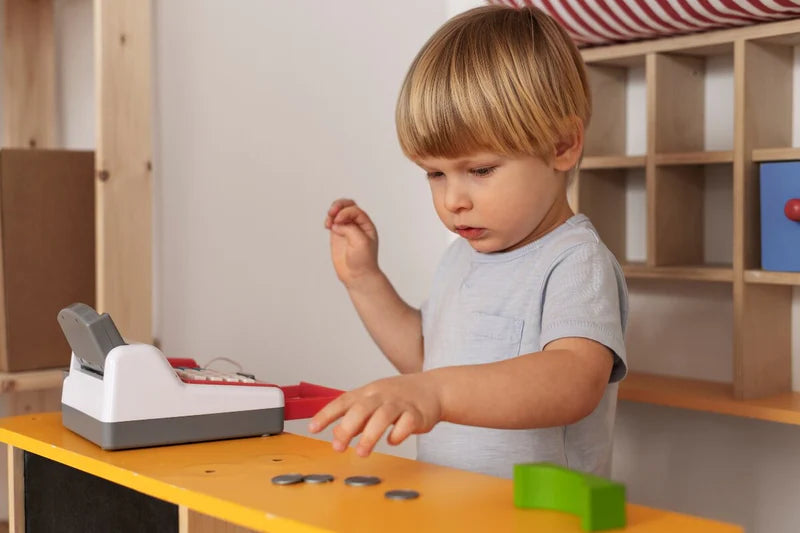
Integrating Pretend Play into the Montessori Approach
Share
Pretend play is where kids can become anything they dream of - an astronaut, a chef, or even a knight! It’s a fun way for little ones to use their imaginations, create stories, and learn about the world while they play.
However, in Montessori, pretend play is encouraged only when it’s based on real-life situations, not fantasy.
So, what’s the difference?
Fantasy play includes things like dragons, wizards, and magical elements that aren’t real, which Montessori generally avoids. Kids can’t always separate reality from fantasy, and it might cause confusion or fear. Plus, fantasy play doesn’t offer the real-world skills and personal growth that Montessori aims to nurture.
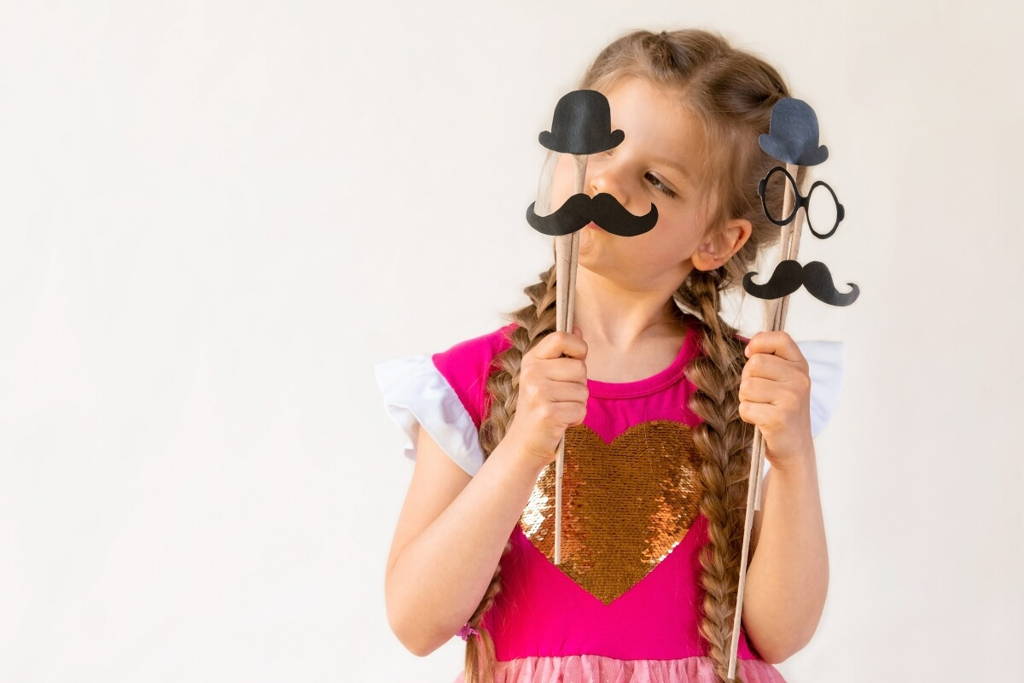
So, today, we’ll see how Montessori toys support pretend play within reasonable limits.
Montessori and Pretend Play: A Modern Perspective
In Montessori, pretend play is all about imitating real life - simple as that. Kids watch adults every day and love to copy what they do. Montessori creates spaces where children can act out these daily activities. You’ll see mini kitchens, toy brooms, and some everyday tools.
These activities let them use their imagination while learning real-life skills like interacting with others, keeping things tidy, or caring for siblings.
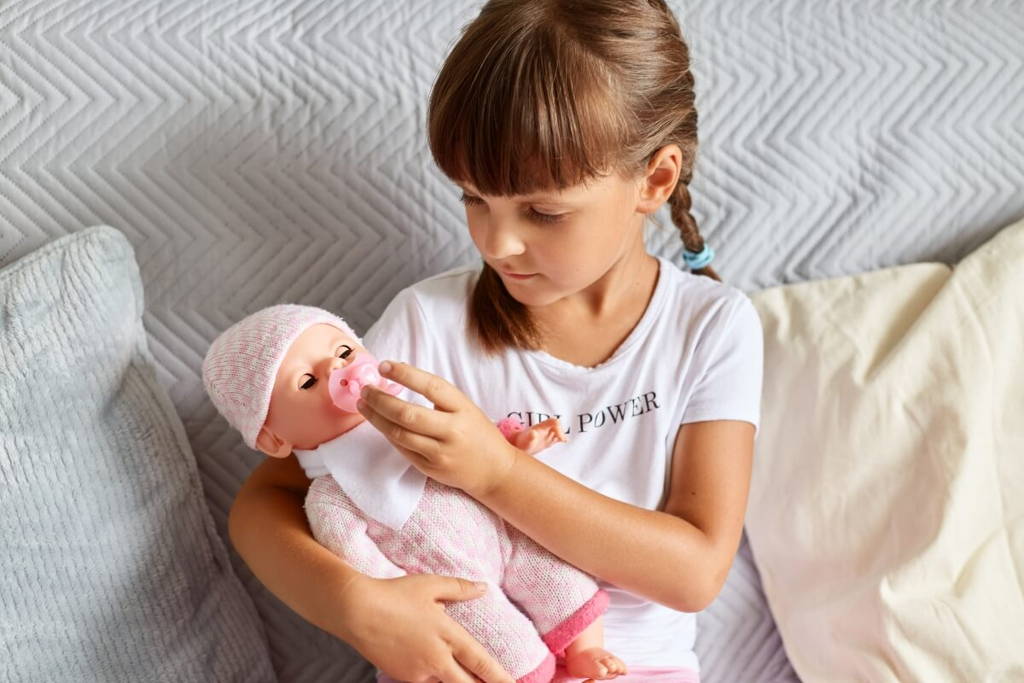
Ok, great, but how does pretend play help children with their development? First of all, it helps kids explore their creativity and learn about the world around them. When they play pretend, they practice valuable skills like problem-solving, communication, and social interaction.
Second, there are plenty of ways children can exercise pretend play, and all of them require using their imagination.
Comparing Montessori to Other Approaches
While Montessori focuses on real-world skills and imaginative play balanced with structure, other educational methods, like Waldorf, take a different approach. In Waldorf, everything is pointing at creativity, art, and storytelling.
Basically, this allows children to explore a fantasy world without many rules. Waldorf classrooms often feature imaginative play with elements like fairies, magical creatures, and lots of artistic activities.
Unlike Montessori’s focus on hands-on learning and practical skills, Waldorf waits to introduce academics, letting kids spend more time in make-believe and creative play. So, when we take a look at the Montessori vs. Waldorf perspective, it’s clear to see that Montessori keeps it real, while Waldrof makes it fantasy.
Developmental Milestones for Pretend Play
In Montessori, there are different age-specific milestones in pretend play. Here’s how it goes:
-
Infants (0-2 years):
Babies start by watching, pressing buttons, shaking toys, and mimicking adults. They love pretending to talk on the phone or feed a doll, copying what they see.
- Toddlers (2-3 years):
Playing with a toddler at home comes down to pretending real-life situations like being a doctor and a patient. They imagine simple scenarios and work together with you to decide who plays which role.
-
Preschool (3-5 years):
Kids get into more complex play, like setting up a grocery store or acting out stories with friends. They create roles and simple plots, making their pretend play more detailed.
- School Age (5+ years):
Pretend play gets even bigger and more organized, thanks to the advanced Montessori Play Techniques: Beyond the Basics Kids play as engineers, gardeners, or chefs - always keeping things rooted in reality but with a fun twist!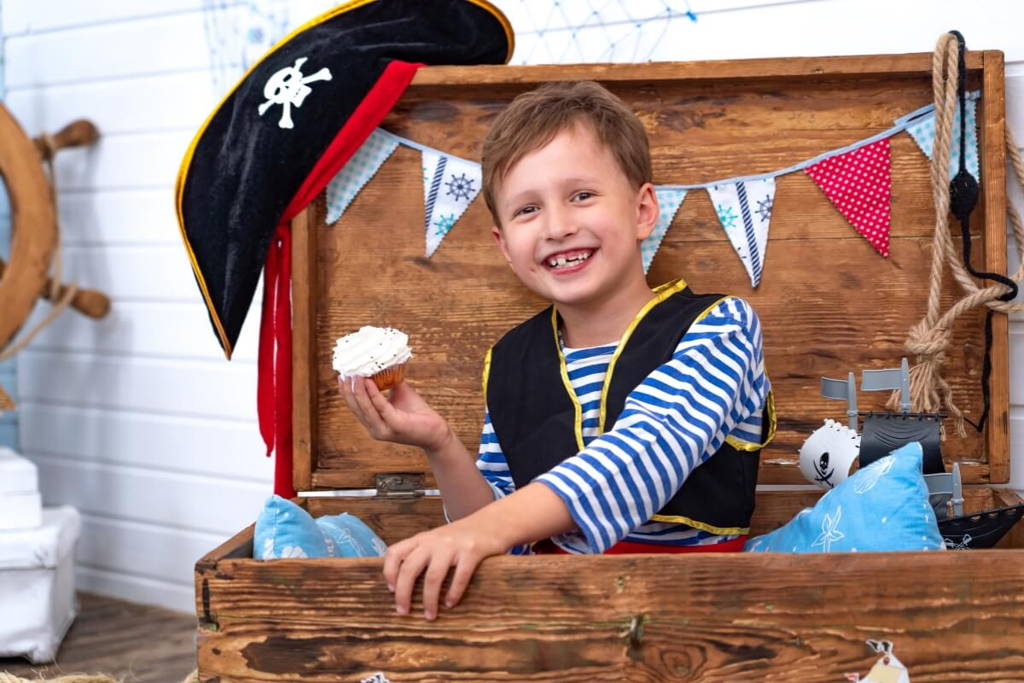
Pretend and Fantasy Play
As we already said, Montessori toys encourage pretend play that’s connected to real life. This is perfect for supporting your child’s growth with a touch of imagination. Here are some great examples.
- Kitchen sets and cooking tools: Let kids pretend to cook like grown-ups with realistic pots, utensils, and food prep items. It’s a fun way to learn daily routines and practice fine motor skills. Check out these Montessori Cooking tools
- Dress-up kits: Costumes like doctor or chef outfits encourage role-playing and learning basic skills - like using bandages or stirring a pot.
- Home decorations: Kids can set up their pretend home, arranging pillows, small furniture, and decorations. They learn tidying, organizing, and spatial skills while having fun setting up their space.
-
Tool sets and workbenches: With realistic tools, kids can mimic adult tasks, improving hand-eye coordination and problem-solving.
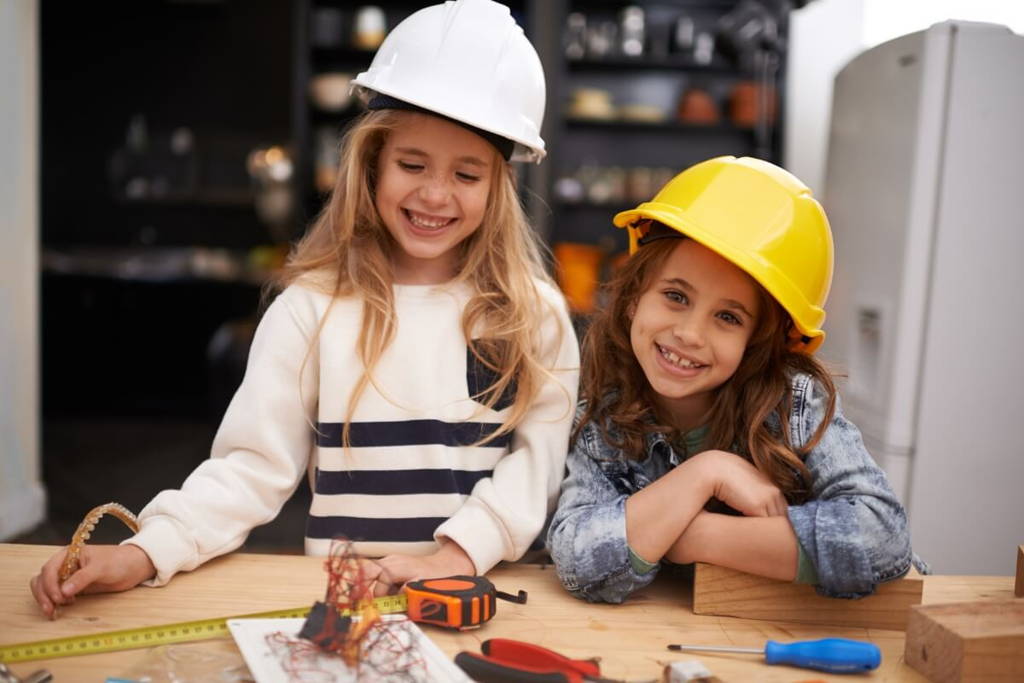
- Grocery store sets: Pretend food, shopping carts, and cash registers teach kids about money, numbers, and social interactions.
-
Cleaning sets: Mini brooms and mops let kids imitate household chores, learning about cleanliness and responsibility.
-
These toys keep play grounded in reality, and they support creativity and essential life skills. Also, there are other great Montessori Toys that help with overall development for all age groups.
Open-Ended Toys and Their Role in Pretend Play
Open ended toys, like blocks, fabric, and wooden figures, are key in Montessori play. They don’t have a set purpose, so kids can use them however they like. And guess what? These toys offer endless creativity and imagination possibilities.
Here’s why they’re great:
- Versatility: Open-ended toys let kids create anything they can imagine, like castles or bridges. They encourage creativity and help kids think outside the box. Check out this Montessori Wooden Marble Run for a versatile play experience.
-
Promotes problem-solving: Kids learn to think critically and invent solutions as they decide what to build with the materials they have.
- Supports multiple play scenarios: From building a house to crafting a spaceship, these toys allow children to explore various pretend play scenarios.
- Improves social play: Open-ended toys encourage teamwork, communication, and shared imagination when kids play together.
 Conclusion:
Conclusion:And that’s a wrap. Montessori combines practical life skills with imaginative play - this creates a balanced learning experience for kids. Practical activities teach children how the world works, while pretend play lets them explore their creativity and think beyond the everyday.
It’s all about finding the right mix, actually - teaching essential skills while giving kids the freedom to imagine, explore, and have fun.
By blending both, Montessori provides a well-rounded education that helps children grow into capable and creative individuals.